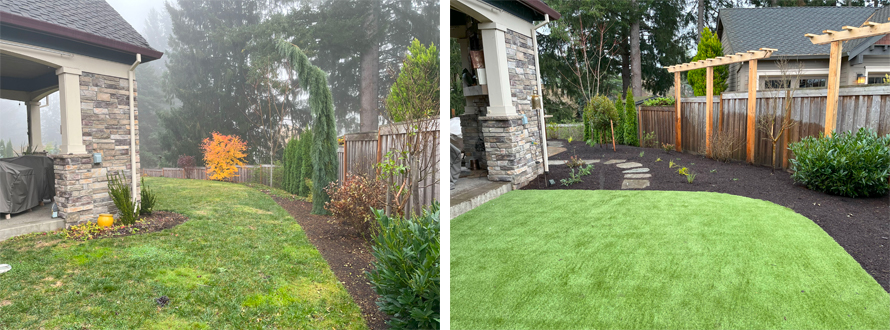New Home, New Landscape
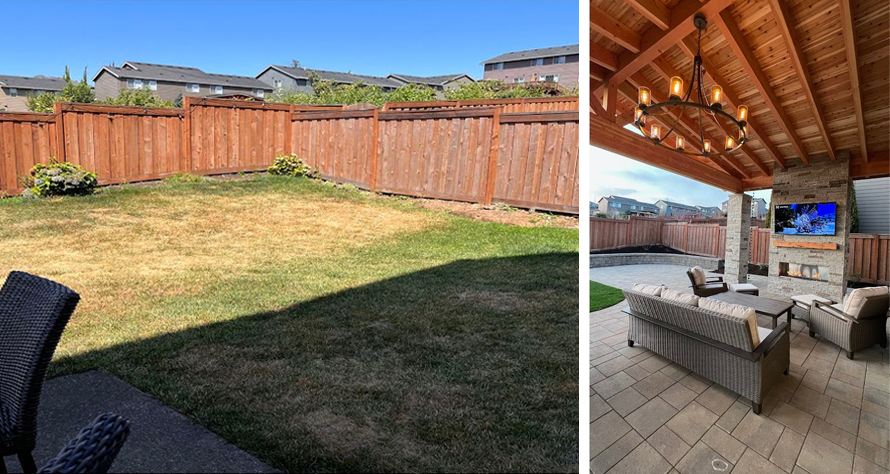
A new house provides the opportunity to start fresh on your home design. Each room is a clean slate waiting for your personal touch. The same is true for what sits outside the windows. A new home deserves a new landscape, whether it’s replacing the builder’s special square of grass and cement patio or transforming a chaotic wildlife habitat into something more useful. Planning your outdoor living space should be exciting. The consultants at Landscape East & West are ready to help you create your design and get to work installing the yard of your dreams.
Working on a landscape plan is similar to working on a home remodel. It’s best to run it past a professional who will ask the right questions and make suggestions you may have overlooked. Our designers offer advice and create a plan that includes how you want to use the yard today and even 5 or 10 years from now. A new yard design starts with a solid foundation that can be built upon and easily altered to meet a homeowner’s changing needs.
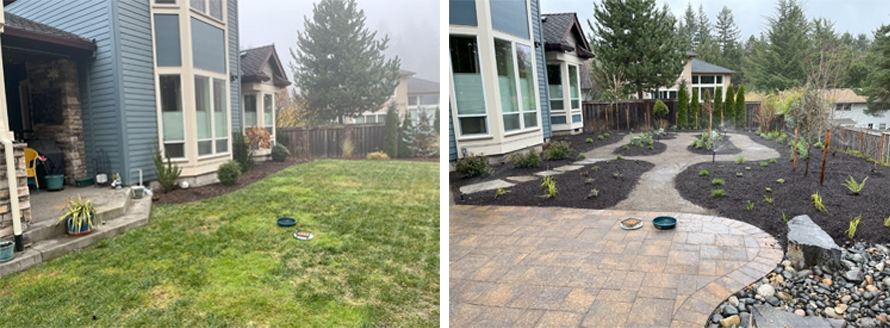
There is a proper roadmap to follow when creating a landscape design. Our professionals will collaborate with you on the following:
- Assess Your Site
We are long-term Oregon residents, so we understand the climate of the Pacific Northwest. However, we also explore the microclimate in your yard. We’ll look at how the sunlight moves across the space and how water drains, then test your soil type to ensure we select the right plants. - Define Your Goals
One of our most important steps is understanding your goals for your outdoor living area. We’ll ask how you want to use the space — an area for entertaining, gardening, playing, dog running, or relaxation. We’ll also want to learn more about your aesthetic: formal, natural, modern, or cottage. And, of course, we’ll find out how much you can dedicate to maintaining the landscape.
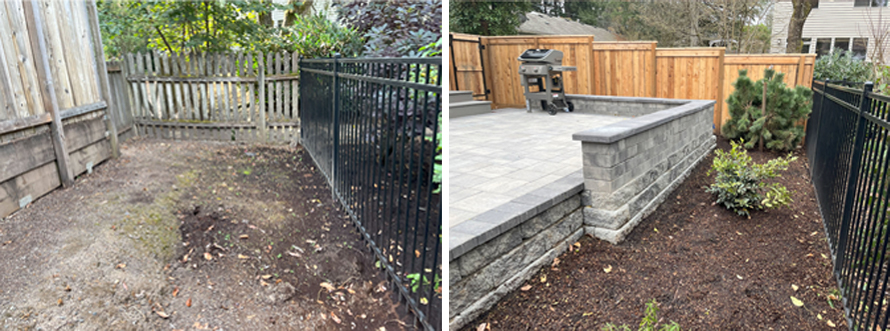
- Design Functional Areas
Once you identify what activities you want to experience in your yard, the space can be divided into different zones based on the function. One area may be for grilling and eating, another for a garden, with a section for a play area.Here’s where our experience comes into play. Maybe you’ve dreamed of an outdoor kitchen or a light and sound system. To make those dreams a reality, we’ll ensure water, sewer, and power lines can be installed or accessed. There’s always a bit of foundational work to support what lies above.Another consideration is the pathways that ease movement between functional areas and give your yard a more cohesive look. What do those paths look like — winding, straight, brick, crushed stone? There are endless possibilities. Within the functional areas, focal points can be added to draw in the eye and lend a special touch to your yard. A water feature, statue, gazebo, firepit, or garden bed can all work.Finally, we’ll plan how each area will transition through the season. A play area for pups could turn into a mud pit when it rains. Therefore, a patio area to clean off muddy paws may become essential to save the floors in your house. Similarly, a shade structure to keep you cool on hot summer days could block the light you may desperately want in the winter. We’ll help you consider your yard in all seasons.
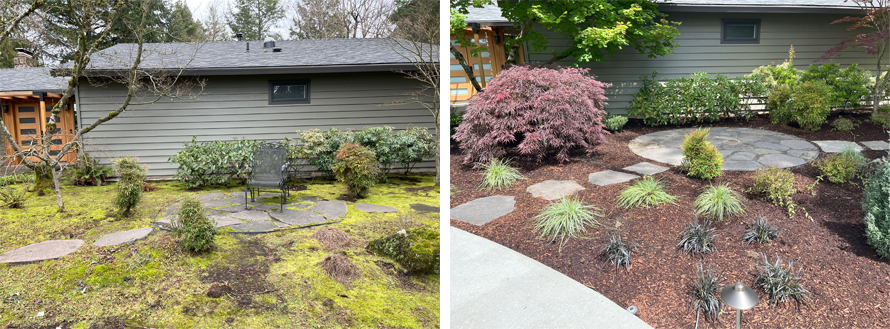
- Select Plants and Materials
There are many options for plants, and our designers can help you choose what will work best in your space based on sunlight, soil type, and drainage. Container plants, annuals, perennials, drought-tolerant, or native plants are just some of the choices we’ll help you make. If trees and larger shrubs are part of the design, we’ll make sure they won’t overcrowd or interfere with structures as they mature. Our designers are big fans of ensuring seasonal interest throughout your landscape and will look for a mix of plants to provide color and texture throughout the year.To give you areas of solid footing within the planting, you may need pathways, patios, or retaining walls. We’ll help you find what works best with your aesthetic and budget, from crushed stone to brick to concrete pavers. - Consider Sustainability
At Landscape East & West, we’re big fans of sustainable landscapes. That doesn’t always mean rock gardens, although there’s also a place for them. We start with water-saving irrigation systems, like drip systems and smart functionality that waters where and when plants need it. Native and drought-resistant plants can also add to a sustainable landscape and often require less maintenance than other plants. We also like to think of edible gardens as sustainable since what’s not eco-friendly about growing your own food?
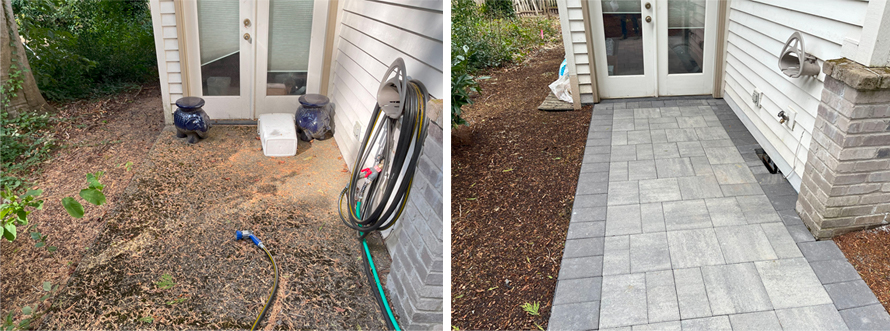
- Create a Maintenance Plan
A great-looking landscape takes ongoing work. There’s no way around annual maintenance, but how much work will be needed varies with the design. A flower garden will need more attention than a paver patio. Part of our job is to help our clients understand how decisions they make in their initial design will have long-term impacts on their budget and time.Mulching, pruning, mowing, fertilizing, and even irrigation system winterization and inspections are all part of a landscape design. We give you the full picture, not just how your new landscape will look when completed, but the routine care necessary to keep it looking great. - Plan for Future Growth
A yard should be designed to allow transitions as the needs of a homeowner change. A young family will have children that grow out of a play structure. A busy executive might retire and take up gardening. What worked and felt right in 2024 could become stale in 2030. Our goal is to continually meet your needs by installing a solid foundation that can easily be adjusted.
Ready to get started on the new landscape for your new home? Contact us for a free consultation. And check out more of our before and after photos below.

